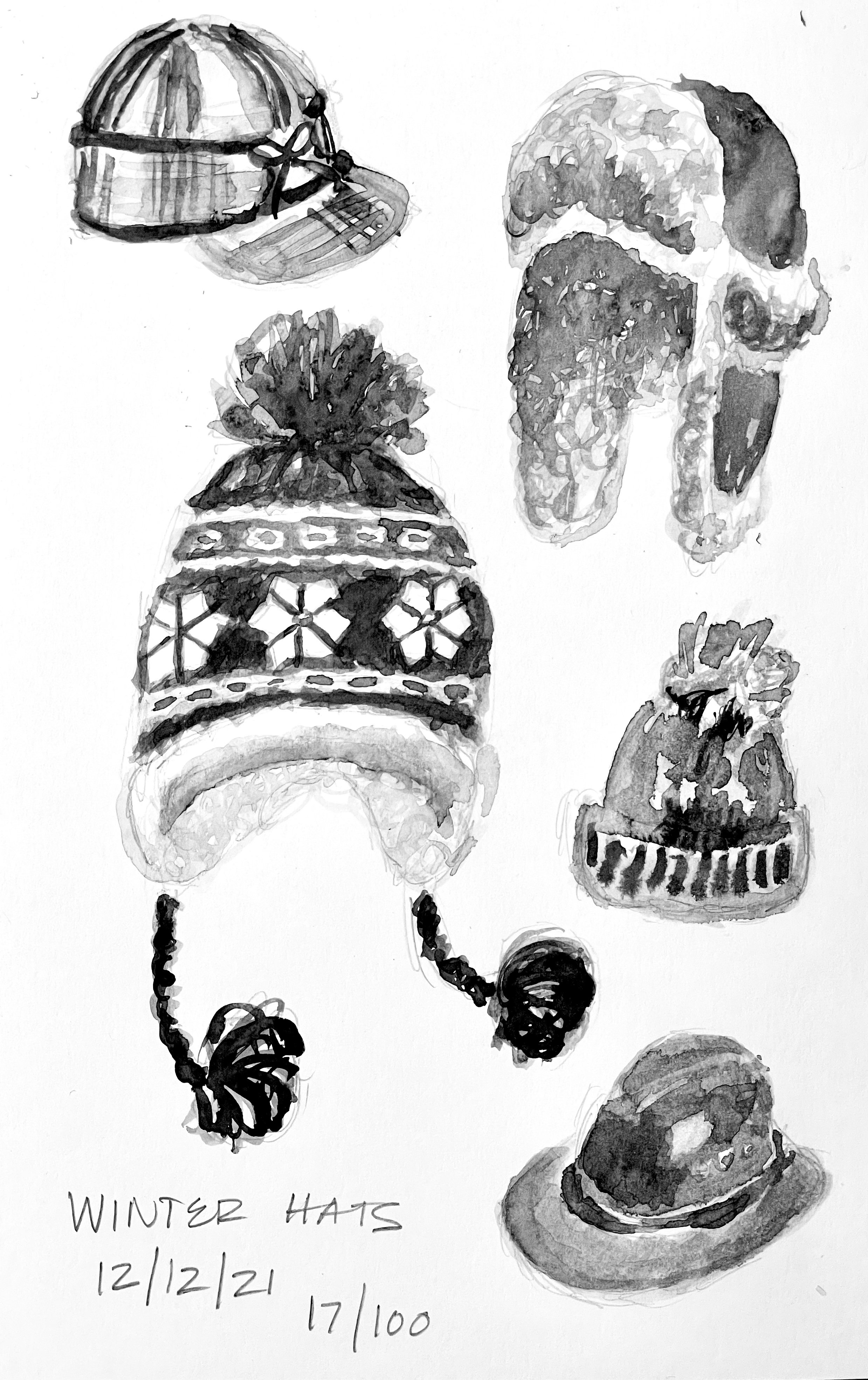Hat
This week’s theme: Winter / Today’s Daily Art Prompt: Hat / Medium: Watercolor / Daily Art Count: 17/100
I’m pretty proud of myself today — I illustrated all 7 prompts from this week’s winter theme. I am really looking forward to creating these little illustrations each morning!
Here we have several different types of hats. Clockwise from top left, info courtesy of the great Wikipedia:
The Stormy Kromer cap: Originally manufactured by Stormy Kromer Mercantile in Michigan, this wool hat is popular in the Midwest United States with hunters and outdoorsmen. It’s named for George “Stormy” Kromer, a semi-pro baseball player who later worked as a railroad engineer. He lost many hats to the wind while working on trains, and his wife Ida made him this warm hat that would stay on more securely. It became so popular with railroad workers that the Kromers started producing the caps in 1903 and they are still made today! [1]
The Aviator hat: A leather cap with large earflaps with a lining of fleece or fur. It became popular in the early 20th century as open-cockpit airplanes fell into widespread use. Pilots needed a hat to keep their heads and ears warm. They are still popular as a fashion accessory and overall winter hat. [2]
Knit cap or ski hat: A popular all-around winter hat, found all over the world in cold climates. Tapered at the top, the stretch of the knitting hugs the head, keeping the cap secure. They are sometimes topped with a pom-pom. These hats date from the 15th century and are still very popular today. [3]
Fedora: A hat with a soft brim and indented crown, the fedora isn’t just a fashion accessory. Often made of wool, cashmere, rabbit, or beaver felt for extra warmth in the winter. Seen as early as 1891, the fedora gets its name from the title of an 1882 play by dramatist Victorien Sardo, Fédora, which was first performed in 1889 in the US with Sarah Bernhardt in the lead role of Fédora Romanov. Her character wore a center-creased, soft-brimmed hat. [4]
Chullo: An Andean style of hat with earflaps made from vicuña, alpaca, llama, or sheeps wool. Born in the harsh mountains of Peru, chullos have ear flaps that can be tied under the chin. The Chullo has its origins in the cultural exchange between Spaniards and the native people of Peru, who incorporated elements of their birretes (a square cap with 3 or 4 peaks and a pom-pom) and the original hat of the Andeans. [5]
And there you go! More than you ever wanted to know about different types of winter hats. You’re welcome.
Join me as I work to make art for 100 days, following the daily art prompts inside Bonnie Christine’s Flourish Membership. Each week has a theme with 7 prompt words within that theme. Flourish is a monthly membership for artists and designers, opening in May and October of each year. Want to learn more? Check it out at surfacepatterndesigners.com/flourish.

